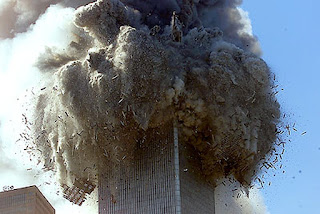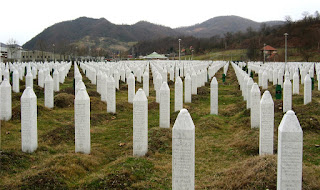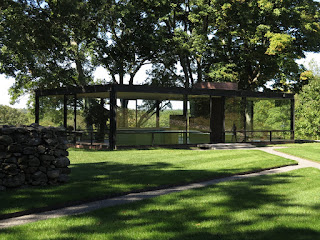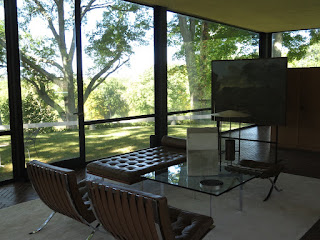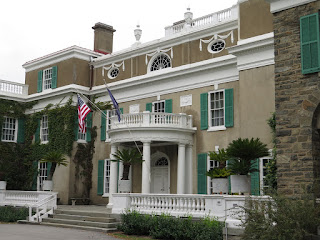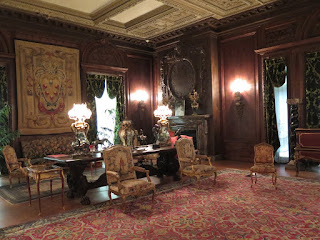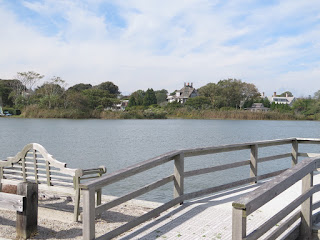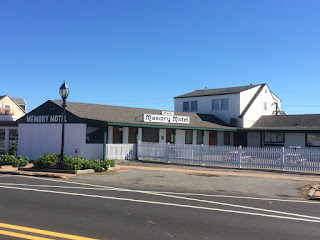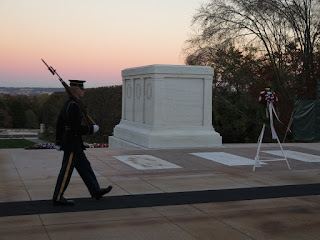Observations, thoughts, and images as Bill and Robin embark on the third phase of their life journey - post education and career. Through Travel as a Political Act, they explore human history, geography, culture, and humanity.
Thursday, December 24, 2015
Tuesday, December 22, 2015
A Tale of Two Cities
"It was the best of times, it was the worst of times, it was the age of wisdom it was the age of foolishness ..... In short, the period was so far like the present...."
So begins Dickens' classic A Tale of Two Cities, about London and Paris. Yet, there is a tale of two cities in New York alone.
Moving to SoHo we were astounded by the lifestyle around us. Architectural elegance from the late 1800s infuses our neighborhood, and the ground floors glow with art galleries, retail stores, and luxury brands. We can walk to dozens of restaurants; from white table cloth to comfort bistros to Halal food carts. We are connected to world-class museums, theaters, parks, and transportation hubs though subway stations a few blocks of us.
On the Upper East and West Sides, in Greenwich Village, and in the new condo towers being built all over the city live families with old New York money, the nouveau riche Wall Street traders and corporate executives, and international elites with their ill-gotten gains.
If you want to get into the weeds, check this out: http://www.nytimes.com/2015/02/08/nyregion/stream-of-foreign-wealth-flows-to-time-warner-condos.html
However, our walks in all five boroughs, through commercial districts and residential neighborhoods, we've seen the other tale of the city. In the Bronx, not far from where we walked, murders are common, and a policeman I spoke with described the crack addition and gangs that brought dangers to everyone in that area. Robin felt particularly uneasy as a white blond chick from California. However, growing up in the 'hood, I was struck by families shopping, friends conversing on the street in their own patois, and children playing. They were economic prisoners trapped in a neighborhood where I'm sure they felt equally unsafe after dark.
And one doesn't need to go to the Bronx to see this other economic tale. Along the streets of our SoHo neighborhood homeless people shelter in doorways wrapped in old rags under plastic garbage bags. On garbage pick-up day old Chinese men and women, with worry-worn faces, scavenge the recyclables for plastic bottles or cans; their elderly bodies bent under the weight of sacks hanging from long poles - like a third world country. And others sleep in the corner of subway cars to get out of the cold, with their possessions stacked around them, or politely apologize for interrupting our ride with their plea for a little financial assistance.
Besides the tale of income inequality in New York, there is also the tale of two social interactions. From our first week here we've been impressed with how friendly and helpful New Yorkers are. On the west coast there's a style of friendliness: "oh, let's do lunch", and they are never heard from again. Or after an invite to your home there's no RSVP or commitment to show up - "sorry we got busy". New Yorkers are polite, but refreshingly straight talkers. And if you're on the street looking confused, a complete stranger will approach to help you with directions, oblivious to race, income, and gender. More than elsewhere we experience, "excuse me", salesclerk smiles, doors held open, and general courtesy like offering seats on the subway, which are a balm to the intensity of a crowded city.
However, Robin recently discovered a different social interaction in the working world. Robin has an office in WeWorks, a co-officing environment occupied primarily by millennial entrepreneurs. The collegial atmosphere she's used to in her previous companies are replaced by suspicion and evasiveness by those trying to get ahead - as many are in New York. On free booze Thursdays that WeWorks sponsors in Seattle the youngin's all hang out together in the common area and share war stories and swap strategies. In her office on West Broadway, New York they grab their drinks and head back to their one room office alone. While we don't have direct experience with Wall Street or financial offices we can only imagine the dog eat dog world of business there.
Age of Wisdom
Well, at least not denial, and some progress on Climate Change
Age of Foolishness
So begins Dickens' classic A Tale of Two Cities, about London and Paris. Yet, there is a tale of two cities in New York alone.
Moving to SoHo we were astounded by the lifestyle around us. Architectural elegance from the late 1800s infuses our neighborhood, and the ground floors glow with art galleries, retail stores, and luxury brands. We can walk to dozens of restaurants; from white table cloth to comfort bistros to Halal food carts. We are connected to world-class museums, theaters, parks, and transportation hubs though subway stations a few blocks of us.
Saks Fifth Ave Christmas Display Window
Bergdorf Goodman's Jewelry Display near the Plaza Hotel
On the Upper East and West Sides, in Greenwich Village, and in the new condo towers being built all over the city live families with old New York money, the nouveau riche Wall Street traders and corporate executives, and international elites with their ill-gotten gains.
If you want to get into the weeds, check this out: http://www.nytimes.com/2015/02/08/nyregion/stream-of-foreign-wealth-flows-to-time-warner-condos.html
Residential Tower by Frank Gehry in Fi Di
New Residential Tower in SoHo
Tallest Residential in NYC at Central Park
Upper Unit sold for $60m to Saudi Prince - as a shell
We seldom see the ultra-wealthy as they swiftly move from doorman protected entries into black limos that whisk them away. But we see the shadows of their existence: the dog walkers and the immigrant nannies.
Dog Walkers in Central Park
Immigrant Nanny in Central Park
And one doesn't need to go to the Bronx to see this other economic tale. Along the streets of our SoHo neighborhood homeless people shelter in doorways wrapped in old rags under plastic garbage bags. On garbage pick-up day old Chinese men and women, with worry-worn faces, scavenge the recyclables for plastic bottles or cans; their elderly bodies bent under the weight of sacks hanging from long poles - like a third world country. And others sleep in the corner of subway cars to get out of the cold, with their possessions stacked around them, or politely apologize for interrupting our ride with their plea for a little financial assistance.
Homeless riding subway
Doorway in SoHo
Besides the tale of income inequality in New York, there is also the tale of two social interactions. From our first week here we've been impressed with how friendly and helpful New Yorkers are. On the west coast there's a style of friendliness: "oh, let's do lunch", and they are never heard from again. Or after an invite to your home there's no RSVP or commitment to show up - "sorry we got busy". New Yorkers are polite, but refreshingly straight talkers. And if you're on the street looking confused, a complete stranger will approach to help you with directions, oblivious to race, income, and gender. More than elsewhere we experience, "excuse me", salesclerk smiles, doors held open, and general courtesy like offering seats on the subway, which are a balm to the intensity of a crowded city.
However, Robin recently discovered a different social interaction in the working world. Robin has an office in WeWorks, a co-officing environment occupied primarily by millennial entrepreneurs. The collegial atmosphere she's used to in her previous companies are replaced by suspicion and evasiveness by those trying to get ahead - as many are in New York. On free booze Thursdays that WeWorks sponsors in Seattle the youngin's all hang out together in the common area and share war stories and swap strategies. In her office on West Broadway, New York they grab their drinks and head back to their one room office alone. While we don't have direct experience with Wall Street or financial offices we can only imagine the dog eat dog world of business there.
Wednesday, December 9, 2015
World Trade Center - Cycle of Life
I looked up to infinity, where parallel lines converge,
and it vanished into the mist.
The two towers almost touched, as God's finger to Adam.
They drew me upward to the heavens.
I first saw the World Trade Center (WTC) in 1979 during a visit to my college sweetheart on Fire Island. (See last post) I had an undergraduate degree in architecture from the University of Washington, and was applying to graduate school that fall. Coming from Chicago, the city that created the skyscraper, I had to see these new Tallest Buildings in the World.
World Trade Center Towers and
World Financial Center (Foreground)
Minoru Yamasaki was selected to design the WTC in 1962. He was born in Seattle, went to Garfield H.S., and earned his bachelors degree in Architecture from my alma mater. He was a favorite son of Seattle after moving and establishing his practice in Detroit, MI (to avoid internment during World War II). He left multiple legacies in Seattle: The Rainier Tower, the IBM Tower, and the Pacific Science Center. All share his modernist gothic motif with the WTC.
Rainier Tower, Seattle
Pacific Science Center, Seattle
LIFEThe two WTC towers opened only six years previous in 1971 and 1973. It was a vast complex of seven buildings developed on reclaimed land from the Hudson in collaboration among the states of New York and New Jersey, and PATH (Port Authority - Trans Hudson) among others.
Original WTC Master Plan
WTC Towers, Marriott Hotel at base (small by comparison)
WFC left Foreground
The design had several innovative features for the time. It created elevator sky lobbies to increase floor efficiencies by stacking elevators thus using the same shaft space. The floor framing spanned from the tube-framed exterior to the central core allowing an open floor plan, in contrast to traditional design that distributed columns throughout the interior. The perimeter contained 59 column per side and was constructed with prefabricated modular steel frames each consisting of three columns, three stories tall, connected by spandrel plates.
WTC Towers structural plan
The Exterior columns were only 18" apart, some say because Minoru was afraid of heights, others that it was to create a stiffer exterior because when the towers sway the vertical lines could reference the movement and make some people queasy.
The building had its detractors from the American Institute of Architects to critic Lewis Mumfor, who observed it looked like "the boxes that the Empire State Building and Chrysler Building came in". The narrow office windows, framed by the deep tube structure, restricted views and were disliked by many. Activist and sociologist Jan Jacobs also critiqued the plan for its use of the site, arguing that the waterfront should be kept open for New Yorkers to Enjoy.
None-the-less, the Towers were impressive in their height and elegant form. Seen from all over NYC and beyond. I remember being on Fire Island during that same trip and they could be seen over 40 miles away, silhouetted pair in the setting sun.
DEATH
The events of September 11, 2001 will be seared in our minds. Like the Hindenburg bursting into flames over N.J. for our parents and the assassination of JFK in Dallas for the boomers, the WTC attack in NYC will be the afterimage for our children. We all remember where we were and what we were doing. Robin and the girls had just moved into my Phinney bungalow the week before. Furniture hadn't been realigned to accommodate three girls in the house. Our TV was on a stand in the space next to the kitchen. Before work, Robin was watching the morning news as I was still getting ready upstairs when I heard her cries to come down immediately. When I did we all just stood there transfixed as the towers crumbled to the ground in a fountain of dust.
Fountain of dust in the collapse of WTC Tower
REMEMBERANCE"The beginning of the end of War lies in Remembrance", Herman Wouk
All cultures have created memorials to their dead. It's literally part of what defines us as human. Millennia ago humans buried their dead in organized mounds. Three thousand years ago we built pyramids to honor the departed and prepare them for the afterlife. After all wars, great and small, regardless of who initiated or is at fault, all sides honor their dead. And we should particularly remember the innocents - those beyond the reach of politics. The Jews of the holocaust, the Muslims in Srebrenica, the children and office workers in Oklahoma.
Memorial to the Murdered Jews in Berlin
Memorail to the Genocide in Srebrenica
Empty Chairs in Oklahoma
The years following the attack there was much debate and conflict about the economics of the land, the politics of financial responsibility, the emotions of victim's families, and the appropriateness of the design; which had to represent the losses from five different attacks (including the 1993 WTC attack), and different constituents (fire, police, port authority, employers, employees, occupants, etc). There continues to be ongoing debate about the construction and operational cost overruns for the foundation that built the memorial (which was not funded by taxes).
We were here on the 14th anniversary of 9/11 and in the morning watched on TV the annual reading of the names. Over 3000 of them, periodically with poignant personal stories. Later, that evening, we saw two blue streaks of light shining into the night sky and vanishing into the mist - a reminder of what was. We were compelled to walk to them from our SoHo loft at 11:00 that night.
Shafts of blue light at the construction of a new tower.
Day or night the memorial is contemplative, evocative, and emotional. It transcends politics and tragedy. Two sunken, acre sized, fountains outline the footprint of each missing tower, and the void left for the family by each victim's absence. Surrounding each fountain bronze rail-plates are engraved with the names of each person, grouped with their constituents, who died in the five attacks. In the evening, light from below illuminates the their names creating an etherial after-image caught in the mind's eye.
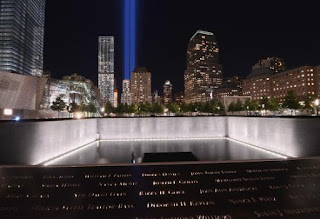
9/11 Memorial
Still, calm, reflective water beneath the bronze rails imperceptibly flows to plummet 33' over a ribbed edge creating a cascade of shimmering ethereal white into the basin below; as we all plummeted from our daily life into grappling with the tumult and loss of what happened - to the victims, our lives, and the world. In the large pool below, the water settles again as we reach reconciliation before disappearing into a bottomless void, "from whom no traveler returns".
REBIRTH
I've been to the site probably half a dozen times since 9/11. From the stench in the immediate aftermath of the attack, to the clearing of the rubble, to the nascent outlines of what may be. Besides the location of the memorial, the winning Master Plan designed by Daniel Liebskein envisioned seven crystalline towers surrounding the open space.
WTC 2004 Master Plan
WTC Concept Fully Built-out
Reflections of the Void
I find in the rebirth that to gaze up the new One World Tower, parallel lines still converge, and draw me to the heavens. We carry on.
Monday, November 30, 2015
Excursions Part 2 - Historical
When I thought about how to blog our Excursions there was enough content to split into at least two posts. Hiking seemed one theme, and historic sites another. But of course travel is never so neatly cleaved. Historical sites have great beauty even if there's no hiking, and our hiking excursions traversed historic footprints as well.
Historical Excursions
HISTORICAL TRIPSRobin's and my first excursion together was to meet Mark, a graduate school friend of Robin's who's since has become a dear friend of mine as well. Mark is very well read, has similar dark humor, and a love of astronomy and politics. He is also a repository of music trivia. Mark frequently travels from his home on Vancouver Island to the East Coast for long stays. He only periodically has to be in NYC so he stays in a quintessential New England town, New Canaan, CT where he and his family previously lived (along with Martha Stewart and others). All three of us being architects, he arranged for us to make the pilgrimage to Phillip Johnson's Glass House.
Classic International Style Glass House
Interior view overlooking manicured "natural" landscape
The property has many Phillip Johnson foibles
Architecture is a great hobby!
Another trip I've planned several times, but never executed, was up the Hudson River Valley for "Leaf Peeping in New England. Monitoring web sites to determine the optimum time for color, I decided this year was October 9 - 11.
Leaf Color progress for our trip.
We invited Teigan to join us since we travel well together and, like her mother, she's a bit of a work-a-colic so hadn't gotten out of the city yet. On Friday I rented a car at my now favorite spot on the UWS and headed across GW bridge, though this time we headed north along the Hudson on the Palisade Parkway. After a few scenic overlooks we got caught in our first deluge here. This was not showers or drizzle of the PNW, but a true frog-strangler and gulley-washer. It came down so hard that the windshield wipers on high speed could not keep up. Robin wanted me to pull over, but we continued to make progress, albeit at a much reduced speed.
View from the Palasaides down the Hudson to GW Bridge
Before the Deluge
Fortunately, by the time we reached our first stop, Hyde Park, we drove out of it and were back to just overcast and a light drizzle. Hyde Park is the location of two National Parks and historic homes of FDR and Vanderbilt.
Both FDR's and Vanderbilt's home are located on an original Crown land grant from the 1600s that extended from the Hudson to Connecticut. FDR's father bought the property and enlarge an early nineteenth century farmhouse to the Italianate style seen today. FDR was born here and, although it was always owned by his mother Sara, lived here most of his life when not in government provided lodgings. He loved the property with its view across the Hudson, and stayed here frequently throughout his presidency; entertaining Kings and Queens, Churchill and many other heads of state. He created the first presidential library on the grounds, and oversaw its construction. Every president since has a library built in their home town. Prior to this tradition presidential papers were haphazardly left to heirs and many were subsequently lost. Additionally, he and Eleanor are buried on the grounds.
FDR's Hyde Park home in Italianate style
First Presidential Library
The Vanderbilt house was not built by the famous steamship and railroad entrepreneur Cornelius Vanderbilt but by one of his profligate grandsons. Despite amassing the largest fortune of its time, all grandchildren spent the inheritance like a US aristocracy they aspired to be. Though they left magnificent edifices including this site, several in Newport, R.I., and the Biltmore in Ashland, by the fourth generation they were all bankrupt. Anderson Cooper of CNN is a descendent. His money is his own. "Rags to Rags in three generations" holds true.
Frederick Vanderbilt's house in Hyde Park
Classic English Country "man-cave"
Just come by for Tea.
After visiting these two historic homes on a grey day we headed north in earnest, passing through Connecticut and Massachusetts, and into Vermont. We stayed in the charming New England town of Manchester, VT in the Green Mountain National Forest.
Classic hotel in Manchester (we had drinks here, but didn't stay)
Teigan and Robin at Fall Fair
with their Maple Syrup jugs
Some kids never grow up.
The three leaf-peepers at a Vermont Covered Bridge
Norman Rockwell
(We also visited his birthplace)
Beautiful - leaves aren't bad either
Rural (isn't it all ) country side
During this election year, particularly with people feeling the Bern from Vermont, my last observation is about this state's fierce independence. The state has the second smallest population, is the most homogeneous (more than 94% white), and the most contrarian in their voting record (one of only two states that did not vote FDR for any of his four terms - among other examples). I can only summarize based on my limited interaction that they have generationally struggled hard with physical labor (logging, maple syrup, subsistence farming), in a difficult climate; relying on themselves, and rejecting consumerism. I think that makes one self-reliant and independent of thought. Not a deep analysis, but the best I can fit into a word-limited blog.
During another of Robin's business trips back to Seattle (or was it Nashville?), I decided to take a trip down memory lane - and stretch for another geographic landmark. Through the 70s my college girlfriend and I had a long distance relationship for several years after; before the inevitable. She worked for the National Park Service and was stationed in the Everglades, FL; Fire Island, NY; Olympic National Park, WA; and Glacier Bay, AK. I managed to visit her at three of the four locations. One of my favorites was Fire Island off Long Island. I took the train out and stopped at Patchogue, LI to see it again. Unfortunately, the park ferry wasn't running as the park was closed for the season. So I took my obligatory photo of the train station, rented a car, and drove to the eastern most end of Long Island - Montauk.
Train Station on Long Island
During my drive I stopped in the Hamptons to discover that while the Dutch settled NY city, the first British settlement in NY state was at the Hamptons. While the homes are beautiful and the landscape serene, one has to conclude that living here in these oversized houses is merely for status. Why in the world would one live 3 hours by train while working in Manhattan. Don't get me started on the guys working, while the family stays in the Hamptons.
Hedges blocking any view of the estates in S. Hampton
Estates in S. Hampton along the inlets from the Atlantic
At the far eastern end of Long Island is an eighteenth century lighthouse. Built while George Washington was President, the lighthouse stood a football field from the crashing surf. I was impressed that their plan considered erosion and projected a 200 year lifespan. They pretty much hit it right on. Now a historic site, rockery and drainage have recently been installed to protect it from further erosion, but it survived its expected lifetime.
Montauk Lighthouse at Eastern most end of L.I.
Attempting to relearn watercolor painting. Jeesh, difficult.
Largest surfcasting destination
The town of Montauk was mostly shut down as their main business now is guided fishing during the tourist season. Only one restaurant was open - and that was bad pizza. While out at land's end I popped our friend Mark from CT a note and by golly he had a bit of music trivia. He suggested I check out the Memory Motel in Montauk as it was made famous in a Rolling Stone song. But said it was one of their worst songs.
Memory Motel. Why they'd write a song about this dump is past me.
Final bit of trivia, after the slaves on the ship Le Amistad revolted, instead of heading back to Africa, the Spanish crew misled them and sailed north landing near Montauk. They were captured and the Owner claimed them as his slaves while abolitionists claimed them free. The event is significant in the movement to abolish slavery in the US. The Supreme court decision was they were free men and not slaves having never made it to the US. They returned to Africa.
For my birthday we decided to go to Washington D.C. Wow, so much to write about this, but I'll leave it to pictures. I'll just say that four days was clearly not enough. While at this time in life I wouldn't want to live there, it does needs a minimum of a week and preferable two weeks to enjoy all its offering. Two highlights. If you go be sure to see the Newseum right on the Federal Triangle. Also, check out the Ford Theatre where Lincoln was shot. They still run plays there so any tours are scheduled around rehearsals and performances. Across the street in the apartment where Lincoln was taken and where he died early the next morning is also a fabulous museum for any Lincoln buff.
Grand Central Terminal before heading to Washington D.C.
AIA lobbying headquarters in D. C. An embarrassment of architecture.
Vietnam Memorial
Reminders from Veteran's Day the day before
Haunting Korean Memorial
M.L. King's Memorial
Quotations are moving, the sculpture less so
The Pentagon where Flight 77 struck
Memorials to Victims of the Pentagon Attack
Benches are oriented in direction of flight path
looking toward plane or occupant victims.
Changing of the Guard
Unknown Soldier
Washington Monument and Arlington Cemetery
American Indian Museum
Newseum
Best non-art museum
Lincoln's Chair in Ford Theater.
Gun was 6" from his head
View towards the President's booth
15,000 books have been written about Lincoln.
This is a tower of them in the Apt where he died.
Georgetown Architecture
George Washington University
After our dinner with Barack.
Before we return to Seattle we'll have one more excursion referenced above. While the kids are here for x-mas we are going to take the train out to Newport R.I. to see some of the other fantastic homes of the Gilded Age. The summer "cottages" of the wealthy from NYC after Saratoga became so yesterday.
Subscribe to:
Posts (Atom)




















